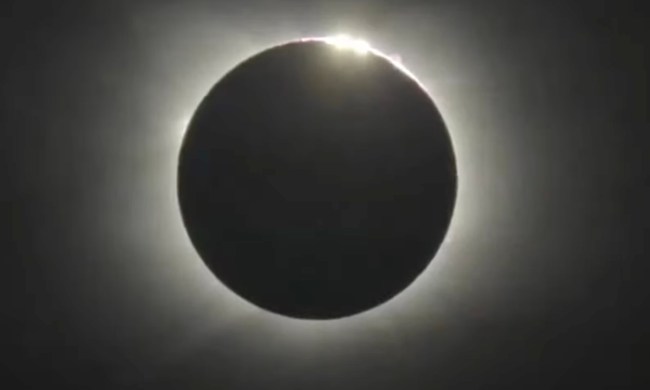Eclipse mania is gripping swaths of the U.S. as today is the day that a total solar eclipse passes across the country from Texas to Maine. The eclipse began in Mexico at 2:07 p.m. ET and is sweeping up and across the U.S., with plenty of excellent views despite concerns about the weather in many places.
NASA is live-streaming views of the eclipse captured from various locations along the path of totality, which is a great way to enjoy the event if you are outside the region where it is visible.
Views of the eclipse so far have been shown from Mexico, Arkansas, Texas, Illinois, and Ohio. The eclipse will soon hit the northeastern part of the country, with Pennsylvania, New York, and New England eclipses coming up shortly.

If you’re heading out to watch the eclipse in person, be sure to be safe and use eclipse glasses or make a pinhole camera to observe the eclipse indirectly. If you are in the path of totality, you can take your eclipse glasses off once the sun is fully eclipsed, but make sure to put them back on as soon as the sun starts to brighten again.
If you are outside the path of totality and are seeing a partial eclipse, then you should keep your eclipse glasses on the entire time. Also, don’t try to observe the eclipse using a camera, binoculars, or a telescope unless you have special equipment for doing so. NASA has more advice on how to stay safe and enjoy the event.
Eclipses happen when the moon passes between the Earth and the sun, temporarily blocking out the sun’s light. During this time, you can see the sun’s atmosphere, or corona, and scientists use this opportunity to observe the stellar atmosphere and learn more about the sun.
An eclipse is total when the moon totally covers the face of the sun, making it dark and cold for a few minutes in the middle of the day. This tends to cause unusual natural activity, with animals changing their behavior and weather systems being disrupted as well. If you are observing the eclipse, NASA requests that you make note of any effects that you see on wildlife and other natural phenomena to assist with research into the topic.
The last major eclipse in the U.S. was in August 2017, when a total solar eclipse was visible across 14 states. There won’t be another eclipse that covers this much of the U.S. until 2044, as today’s path of totality is 115 miles wide, with 32 million people in the U.S. living within the path.



